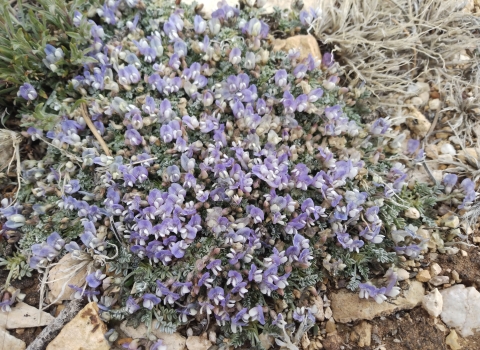The U.S. Fish and Wildlife Service today proposed listing the Peñasco least chipmunk as endangered under the Endangered Species Act (ESA), along with proposed critical habitat for the subspecies. The proposal, which includes a draft economic analysis of the proposed critical habitat, includes a 60-day public comment period.
Historically found throughout the Sacramento and White mountains in Lincoln and Otero counties of New Mexico, the subspecies is now found in low numbers only in the White Mountains. Small even by chipmunk standards, the Peñasco least chipmunk makes its home in high elevation subalpine forests where it feeds off seeds, flowering plants, wild strawberry and piñon nuts.
“A single wildfire or outbreak of disease could be devastating to what remains of New Mexico’s Peñasco least chipmunk,” said Amy Lueders, Regional Director for the U.S. Fish and Wildlife Service in Albuquerque, New Mexico. “We are proposing these actions to provide a safety net for the chipmunk and conserve habitat that is essential for its survival and ability to withstand the threats it faces.”
After a review of the best available scientific and commercial information, the Service determined the Peñasco least chipmunk is at risk of extinction due to the small size and isolation of its single remaining known population. The risk of species extinction from a disease outbreak, such as sylvatic plague, large wildfire, or extreme drought is high. Additional threats to the species include shifts in vegetation, impacts from non-native wildlife, and forest encroachment.
The Service is proposing to designate three units of critical habitat totaling approximately 6,574 acres in New Mexico. The proposed critical habitat overlaps significantly with Mexican spotted owl critical habitat and is located predominantly on federal land.
Designation of critical habitat requires federal agencies to consult with the Service if they are conducting, funding or permitting activities that may adversely modify the critical habitat. Designation of critical habitat does not affect land ownership, establish a refuge or preserve, and has no impact on private landowners taking actions on their land that do not require federal funding or permits.
The proposal will publish in the Federal Register on September 28, 2021, opening a 60-day comment period. The Service encourages the public, academia, federal and state agencies, Tribes, industry and other stakeholders to review the proposal and provide comments. For more information on these proposals, what to comment on, or how to submit comments, see the Federal Register FWS–R2–ES–2020–0042. A final decision to list or withdraw the proposal is typically made within a year after the proposal.
America’s fish, wildlife and plant resources belong to all of us, and ensuring the health of imperiled species is a shared responsibility. The Service is actively engaged with conservation partners and the public in the search for improved and innovative ways to conserve and recover imperiled species. To learn more about the Endangered Species program, go to http://www.fws.gov/endangered/.


